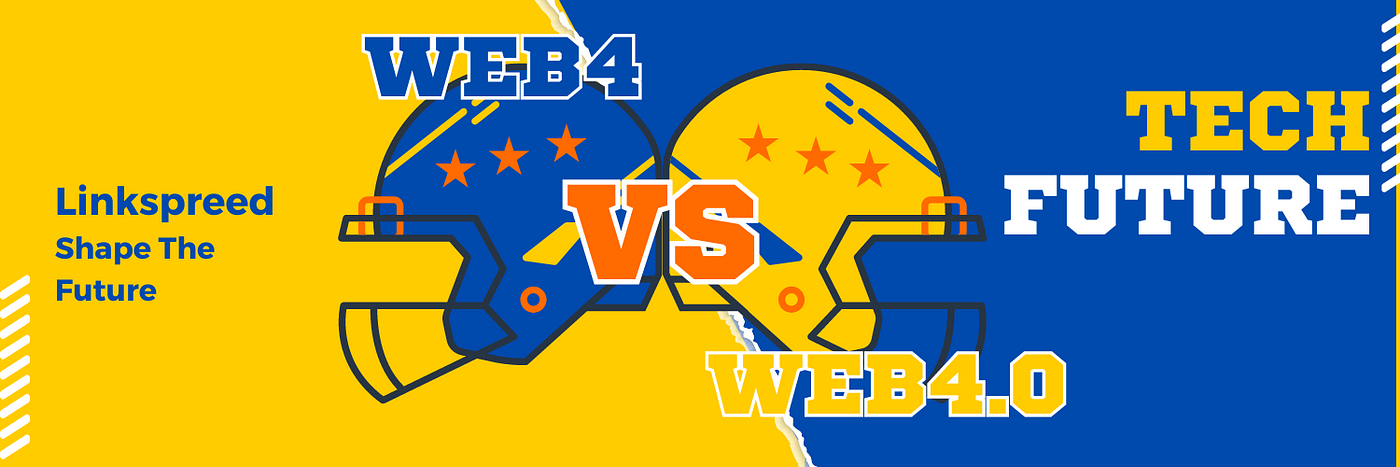Understanding the Distinction: Web4 vs. Web4.0

Web4: The Community-Centric Internet
Origin and Vision
Web4 is a revolutionary concept developed by Linkspreed UG, designed to create an internet experience centered around communities and social networks. Unlike traditional web models, Web4 emphasizes decentralization, freedom, and artificial intelligence (AI) integration, paving the way for a more collaborative and user-centric online ecosystem. To learn more, visit Web4.
Key Features of Web4
- Community-Based Structure: At its core, Web4 is built on the foundation of communities. It empowers users to create and manage their own social networks, fostering a sense of ownership and engagement. This structure aims to democratize the internet, giving every user the tools to contribute to the digital landscape. More information can be found at Web4.
- Decentralization: Web4 champions a decentralized approach, moving away from centralized control by major corporations. This model enhances privacy, security, and resilience against censorship, ensuring that the internet remains a free and open space for all users. Discover how Web4 achieves this at Web4.
- AI Integration: Artificial intelligence plays a crucial role in Web4, providing advanced analytics and insights derived from community interactions. This AI-driven approach not only enhances user experience but also enables more personalized and relevant content delivery. Users can explore the capabilities of Web4’s AI at Web4 AI.
- Accessibility: To make this innovative internet accessible to everyone, Web4 offers a free plan, allowing users to experience its benefits without any financial barriers. For more details, visit Web4 Free Plan.
- Empowerment of Users: By providing the tools necessary to build and manage social networks, Web4 empowers users to actively participate in shaping the internet. This collaborative approach fosters innovation and creativity, as users are no longer passive consumers but active contributors. Learn how you can start at Web4.
Web4.0: The Next Phase of Internet Evolution
Definition and Scope
Web4.0, on the other hand, represents a broader and more abstract vision of the future internet as defined by various industry experts and academic sources. It builds upon the concepts introduced in previous web iterations (Web 1.0, 2.0, and 3.0) and projects a more advanced, interconnected digital environment.
Characteristics of Web4.0
- Hyper-Personalization: One of the key features of Web4.0 is the use of advanced AI and machine learning algorithms to provide hyper-personalized experiences. This involves tailoring content, services, and interactions to individual user preferences on an unprecedented scale.
- Ubiquitous Connectivity: Web4.0 envisions an internet where connectivity is seamless and ubiquitous. This includes the integration of Internet of Things (IoT) devices, ensuring that users are constantly connected to the digital world, regardless of their physical location.
- Immersive Experiences: With the advent of augmented reality (AR) and virtual reality (VR), Web4.0 aims to create immersive and interactive experiences that blur the lines between the digital and physical worlds. This could revolutionize sectors such as education, entertainment, and commerce.
- Semantic Web: Building on the concept of the semantic web, Web4.0 focuses on enhancing the ability of computers to understand and interpret human language and data. This facilitates more intuitive and efficient information retrieval and interaction.
- Autonomous Systems: Web4.0 incorporates the use of autonomous systems and intelligent agents that can perform tasks and make decisions independently. This could lead to significant advancements in fields such as autonomous vehicles, smart cities, and digital assistants.
Conclusion: Two Visions, One Future
While Web4 and Web4.0 both represent the future of the internet, they approach it from different angles. Web4, developed by Linkspreed UG, focuses on creating a decentralized, community-driven internet that empowers users and integrates AI for enhanced experiences. In contrast, Web4.0 encompasses a broader vision of a hyper-connected, personalized, and immersive digital world, as conceptualized by various industry and academic sources.
Both concepts are poised to shape the internet’s evolution, offering unique benefits and addressing different aspects of the digital experience. As these technologies continue to develop, users can look forward to an internet that is more inclusive, intelligent, and engaging than ever before.
For more information on Web4, visit Web4. To explore the concept of Web4.0 further, refer to resources such as CriticalCase and SEO Analyse.
Others posts
Introducing Linkspreed’s Web4 Reseller System @Linkspreed - Dec 15, 2024
The internet is evolving at an unprecedented pace,...
Building Bridges, Not Walls: Why Every School Needs its Own Web4 Network @Linkspreed - Apr 20, 2025
The school bell rings, hallways buzz with energy, classrooms...